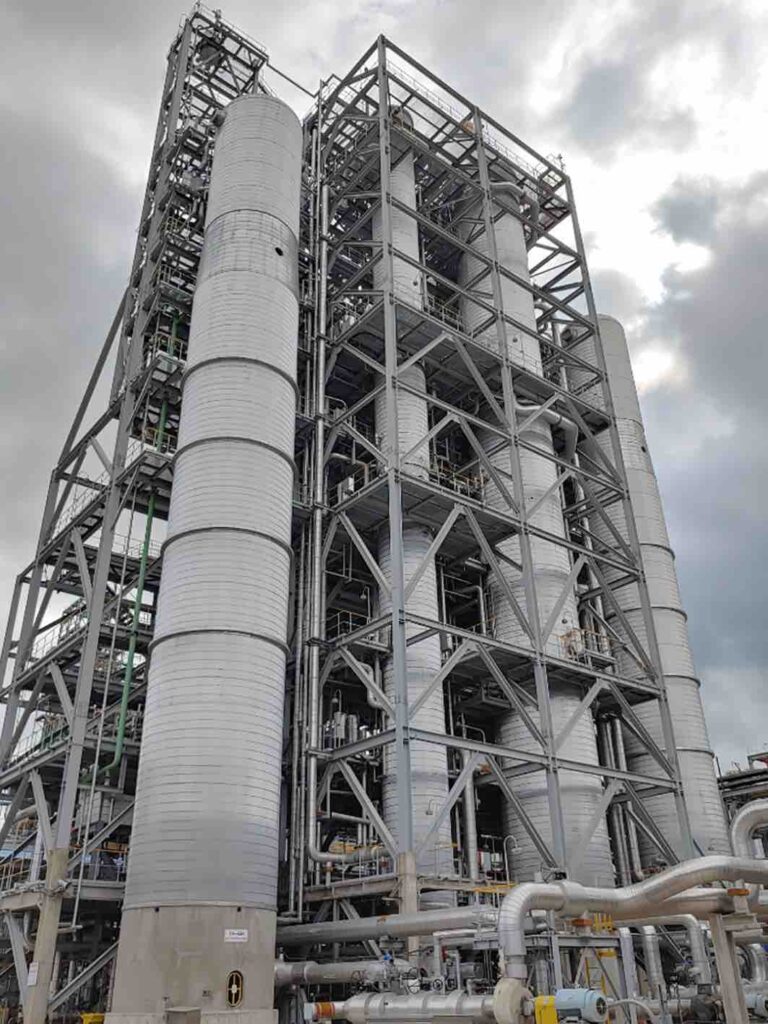As the global demand for acrylic acid is increasing rapidly, manufacturers need to choose advanced processing equipment that can deliver high quality compounds. Chemical company, LG Chem, is strengthening its position in the growing acrylic acid market by utilising Sulzer’s mass transfer technologies.
High-purity acrylic acid is a precursor and intermediary for several chemical and industrial processes. In particular, the organic compound is often used to produce detergents, thickeners, and – most importantly – super-absorbent polymers (SAPs) for sanitary pads and disposable diapers. In addition to this, acrylic acid is used to obtain acrylate esters for surface coatings, textiles, adhesives and additives.
The ever-increasing need for these end products continually drives the demand for more acrylic acid. Independent market research estimates that the global acrylic acid market is expected to reach 18,315.3 million USD by 2022.

In terms of volume, over 6.3 million tons of the compound were produced in 2019 and 8.3 million tons are projected by the end of 2025.
The applications that use acrylic acid have high-purity requirements. In fact, downstream processes require technical- or glacial-grade acrylic acid, whose purity exceeds 94% and 99.9% respectively.
As a result, it is essential for the separation equipment used to effectively fulfill these specifications.
A key partner to increase production
In order to accommodate higher production volumes of acrylic acid and the associated SAPs, LG Chem continuously invests in and expands its acrylic acid value chain.
The company wanted to build additional acrylic acid purification units to increase the capacity of its complex in Yeosu, South Korea, to 160,000 tons of high purity acrylic acid annually.
To realise the planned production increase, LG Chem contacted Sulzer, the leader in separation and mixing technology, to deliver the required acrylic acid crystallsation equipment.
Having already completed similar upgrade projects with Sulzer, LG Chem asked the company to design a new glacial acrylic acid purification solution.
The processes are based on fractional crystallisation. These can remove impurities at low process temperatures while avoiding the use of solvents and eliminating the risk of acrylic acid polymerisation that can occur during distillation.
To obtain high-purity glacial acrylic acid in the fastest and most efficient way, Sulzer’s design consists of two falling film crystallisers, which remove the impurities to reach the specifications, and a static crystalliser as a stripping fractionator to increase the yield.
Speedy turnaround for immediate benefits
LG Chem needed the new unit to be operational quickly, as this would help the company support the increased demand for acrylic acid from its customers.
The use of an existing Sulzer design helped to streamline the project, as no basic engineering study was required.
However, a few modifications to the system were needed. As a mirror image of LG Chem’s existing purification unit, the position of the inlet and outlet nozzles needed to be rotated.
Sulzer was able to reduce its lead time and deliver the equipment onsite in less than 14 months. To do so, the company relied on its global network of specialised facilities.
As part of the installation, Sulzer’s expert teams integrated the purification unit into the existing plant. This was crucial to ensure that the different parts would work well together without causing bottlenecks. In particular, one falling film crystalliser needed to be coupled, at its bottom, with a component provided by LG Chem.
After the assembly of the purification equipment and initial inspection were completed, Sulzer’s specialised teams supported the commissioning and start-up activities.
 Engineer News Network The ultimate online news and information resource for today’s engineer
Engineer News Network The ultimate online news and information resource for today’s engineer





